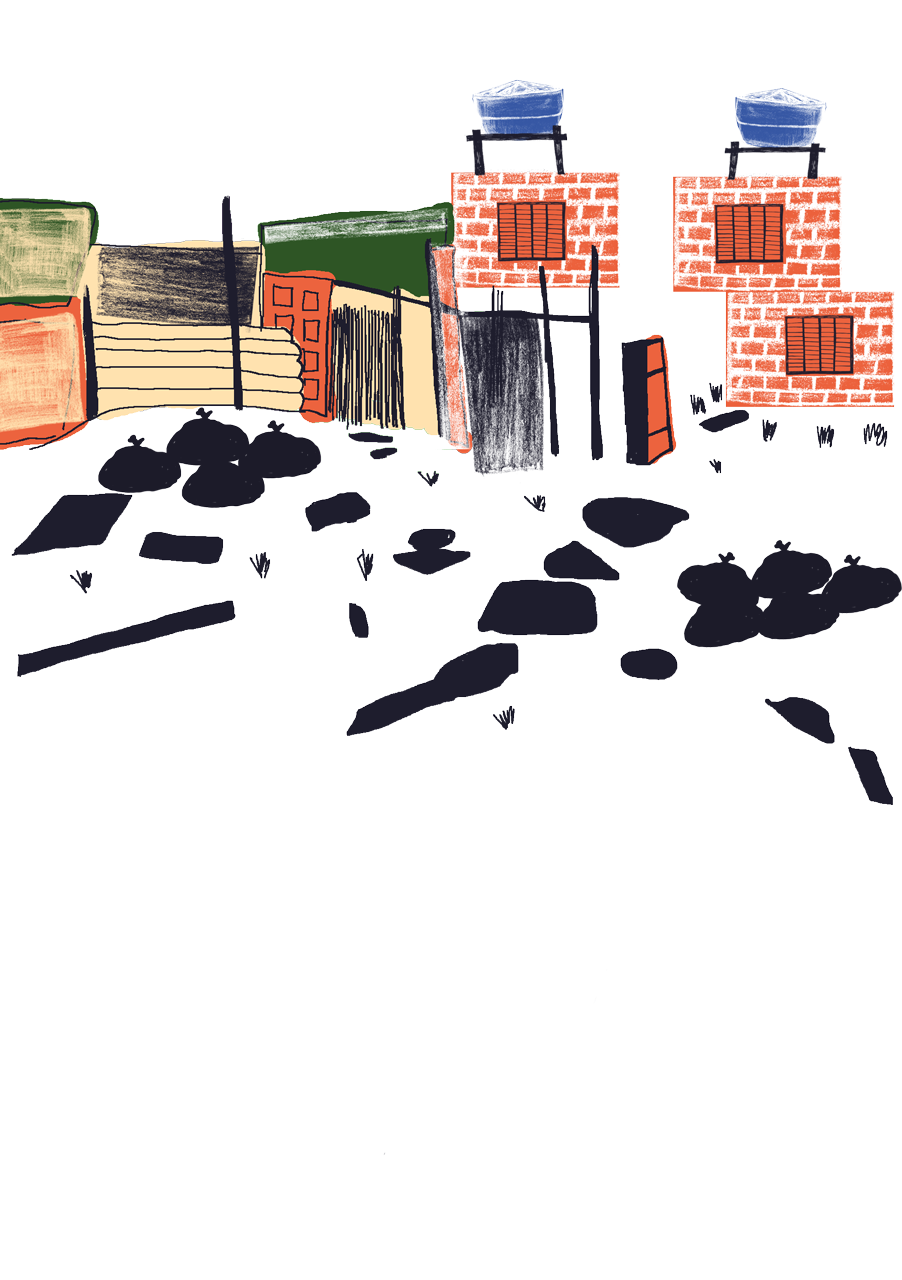
Vila Itaim, Jardim Helena District, São Miguel Paulista Sub prefecture
Leadership Carlos, 46 years old, black, works as a teacher. He has lived in the community since he was born and has acted as a leader since he remembers of. His involvement with the movement occurred through the Movement of Basic Ecclesial Communities, at the end of the dictatorship and the beginning of the process of redemocratization.
“We always have to look for improvement, even though the community is a little more structured today, there is always something to do.”
“Because it is like that, when I lived up there, I thought it would be the same up there and there was no lack of water. Then I heard from my comadre “When you move there you will need a bomb!”, But what is it for? I don’t even know what it was for. And she said, “It’s a pump to draw water, because if you don’t have that pump, you’ll never have water”.
Resident Barbara, is 34 years old, brown, works at home and lives with her husband and 3 other children. Born in São Paulo, SP, she moved to Vila Itaim 3 years ago through contact with her husband’s friends. Her house does not have a water tank and therefore uses gallons to store water. She brings the buckets, turns on the pump, connects the hose and puts it in the drum, then throws the hose out the window of the house. The shower has running water, but there is no water in the kitchen sink and bathroom sink. She takes a bath in a bucket and mug. She always borrows water. Wash clothes on Mondays at 8 am, spend the night picking up water, leave everything full and don’t sleep anymore.
Resident Silvia, 60 years old, white with indigenous origin, single, previously worked as a nurse and lives with two more children. She has lived in the region for more than 30 years, has been moving house within the community and for almost 20 years she is one of the strong leaders in the Pantanal area. It has a 500 liter water tank, but no tap is supplied by it. Her bathroom is inside the house, but there is no running water. She has the sink, but the water doesn’t reach it. Wash the clothes by hand, but only when she gets water. She takes a bath with a bucker and mug because she don’t have a shower. She always borrows water from the neighbors, but she doesn’t lend it, because if she doesn’t have it for herself, how can she lend it? She buys water to drink, an expense that was once R $ 80.00 per month, money that she could buy medicine. She would rather pay the water bill than live like that.
“It gets a little difficult, because we have no way of telling you that the day that water arrived, for example, there is a week that I have no water. I can get 1 bucket of water from the water pipe. ”
About Sabesp having taken some action to guarantee water in the pandemic, she reports: “They didn’t even get here, nor did they ask if we were experiencing difficulties or not. We actually fight with them. ”
Resident Rebeca, born in São Paulo, SP, is 47 years old, white, divorced and lives in 6 people. She is one of the strong leaders in the community, she works alone as a neighborhood representative, doing almost everything. She arrived at Vila Itaim 20 years ago, when she bought the house she lives in and left the rent. She paid for the water connection that pulls the pump, a fight she had with old leaders in 2005. Her house has a water tank of 1000 liters, all the taps are connected to it, but there is still little. Even with all the infrastructure, it buys water to drink.
The Vila Itaim community is located at the eastern end of the municipality of São Paulo. It has existed for more than 70 years and today approximately 60 thousand people live in it, distributed in 8 thousand houses. Located on the banks of the Tietê River, in the lowland area of the main basin, on the border with Guarulhos, its area encompasses several favelas and subdivisions, with masonry houses and stilt houses that were built gradually over the years. The community is still expanding and suffers from constant flooding.
Water became a demand in the 1980s, when the wells used for supply were no longer sufficient and were polluted due to the Tietê River. Currently the water supply in the houses is made through an informal connection from the public network, pulled by pumps and distributed by hoses. This infrastructure was only possible with the struggle of old leaders and the union of the residents who, in 2005, bought the pipes, the pumps and rented the machines to open the streets.
Even in houses that have plumbing and water tanks and are regularly supplied, there is a lack of water. Houses that do not have a water tank, however, have the infrastructure for drums, buckets, pumps and hoses. When water is lacking, residents lend to each other.
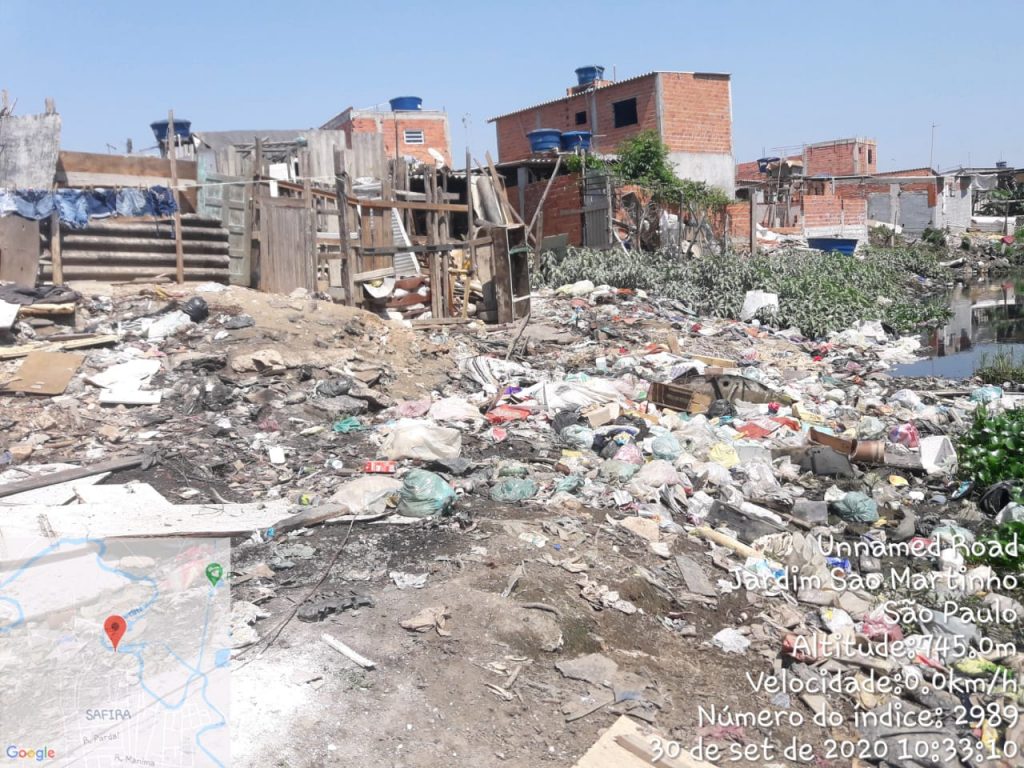
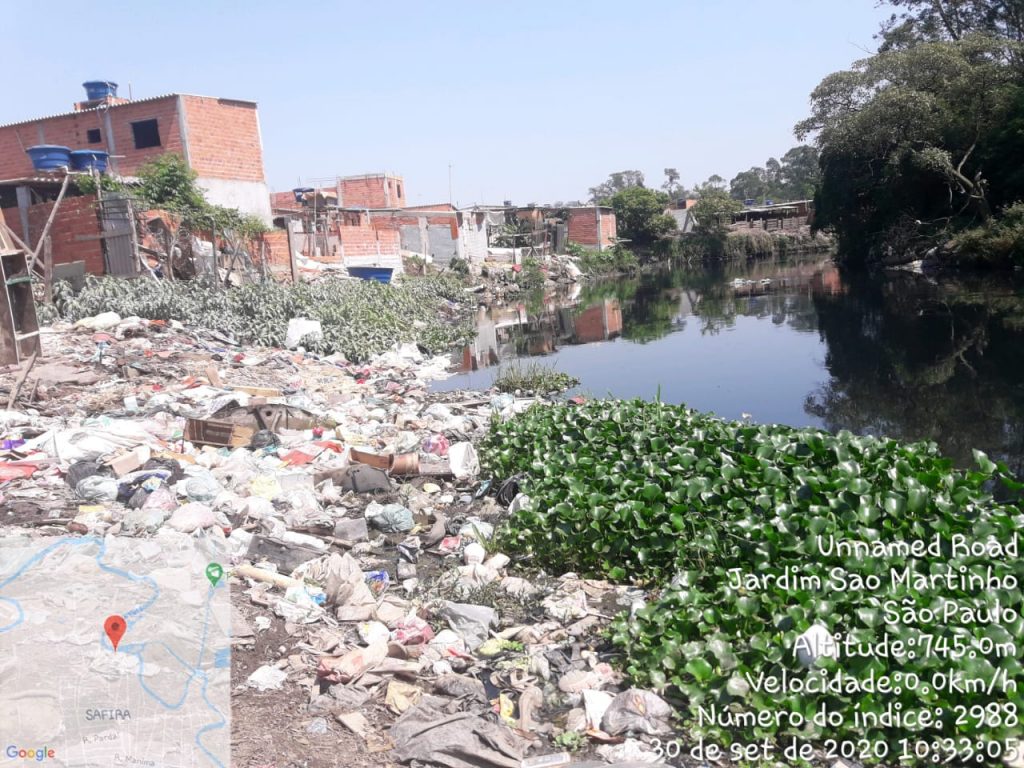

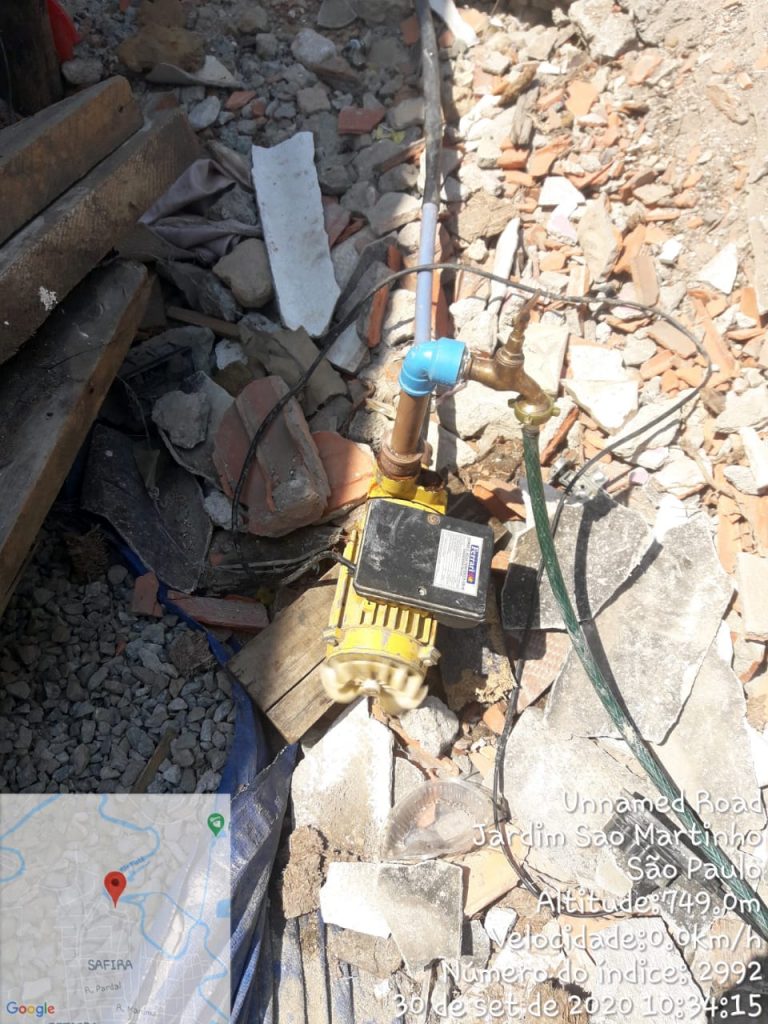
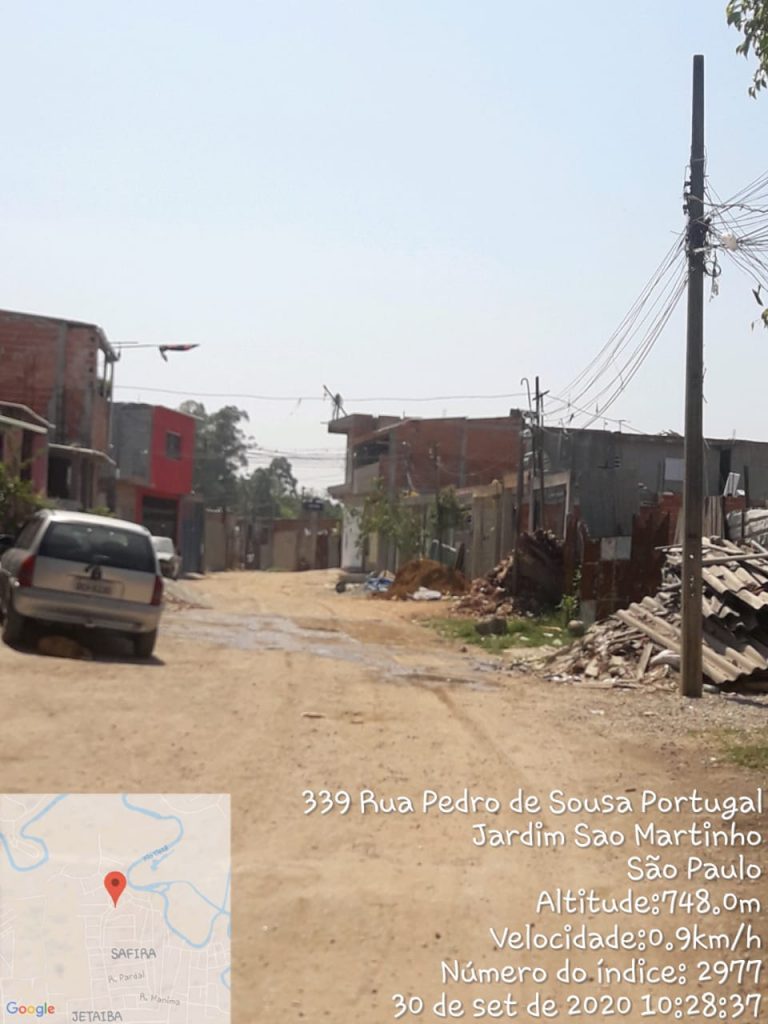

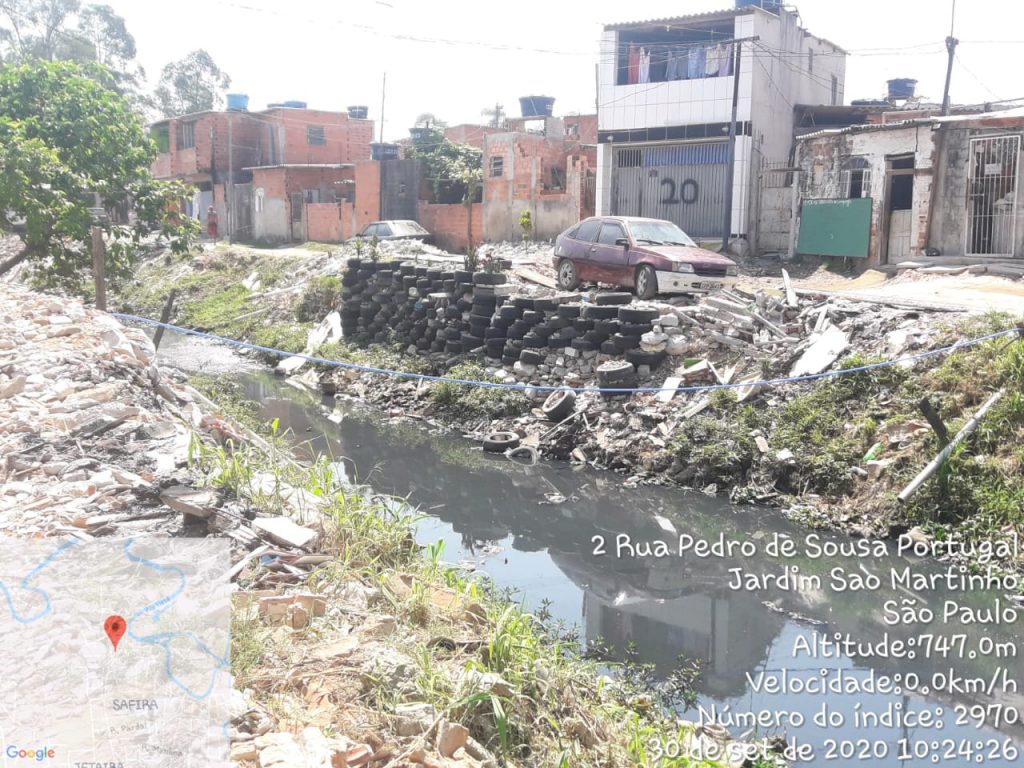
Photos by: Marilene Ribeiro de Souza e Sheila Cristiane Santos Nobre






